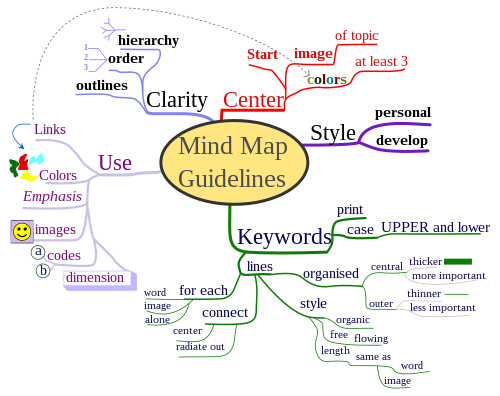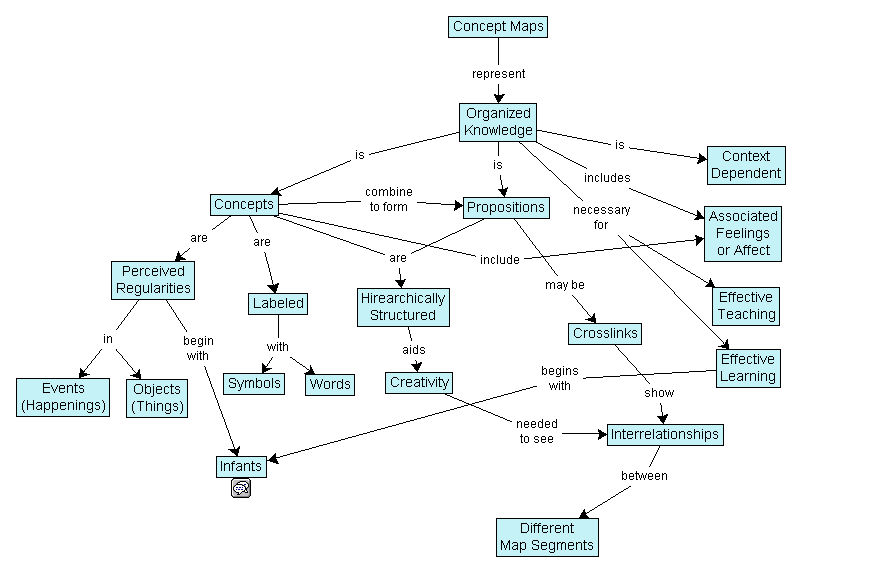This is part of a regular series of articles exploring some of the terms used in e-learning (view other articles in the series). We’ll do our best to break down the jargon and explain what things are from a basic perspective.
A ‘Mind Map’ is a visual way of representing information which works by drawing links between words and short phrases to show conceptual connections.
Mind Maps are typically used to structure and classify ideas in a way that allows the key information to be summarised and subsequently reassembled without needing the original resource, such as a document or presentation. They are usually used as a personal note-taking tool, however they can also be effective as a common resource or when provided as a general summary for videos, texts and presentations. To help improve the effectiveness of the technique, a set of Mind Mapping Guidelines has been created.
Mind Maps are related to Concept Maps, but they differ in that they focus on a single topic and the connections radiate from the centre of the Map. Concept Maps, on the other hand, are used to create connections between multiple topics or ideas. Some people find it useful to make Concept Maps of a large topic and then produce a Mind Map for each of the individual elements.
Getting started with Mind Maps is easy because all you need is a pen and some paper, however it does take a little bit of practice to make sure that you are noting down the key concepts – a good way to practice is to produce a Map for a news item, give it to someone else and see if they can tell you what was covered. If you want to share your Maps with students then you can either use software to create them (see below), save the results as an image and post it to Blackboard, or you can take a photo of your hand-drawn Maps and post that instead.
Mind Map tools available at SHU
Microsoft Visio – on all PCs
MindView – on some PCs
Mind Manager Pro – Site licence for SHU. Contact IT Help if you would like it installed on your PC.
Mind Mup – can be added to Google Drive for free




